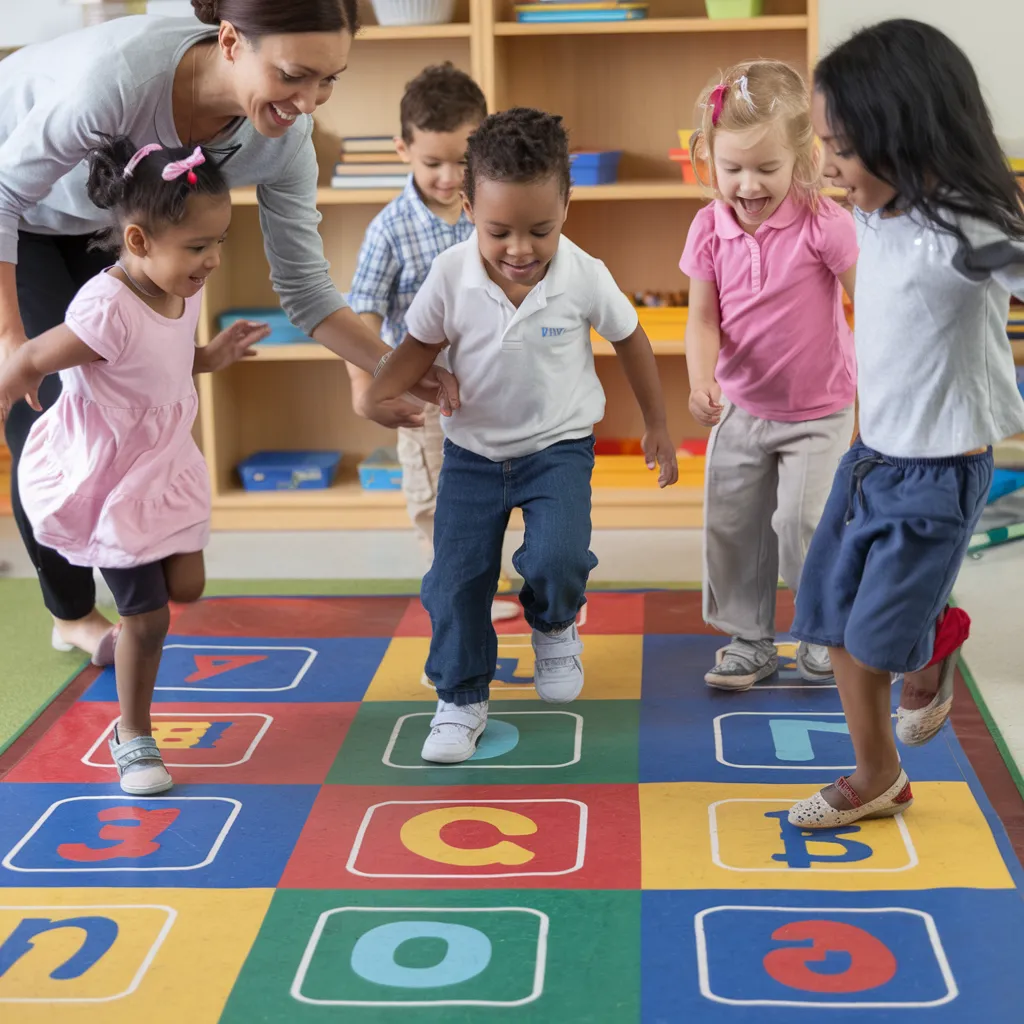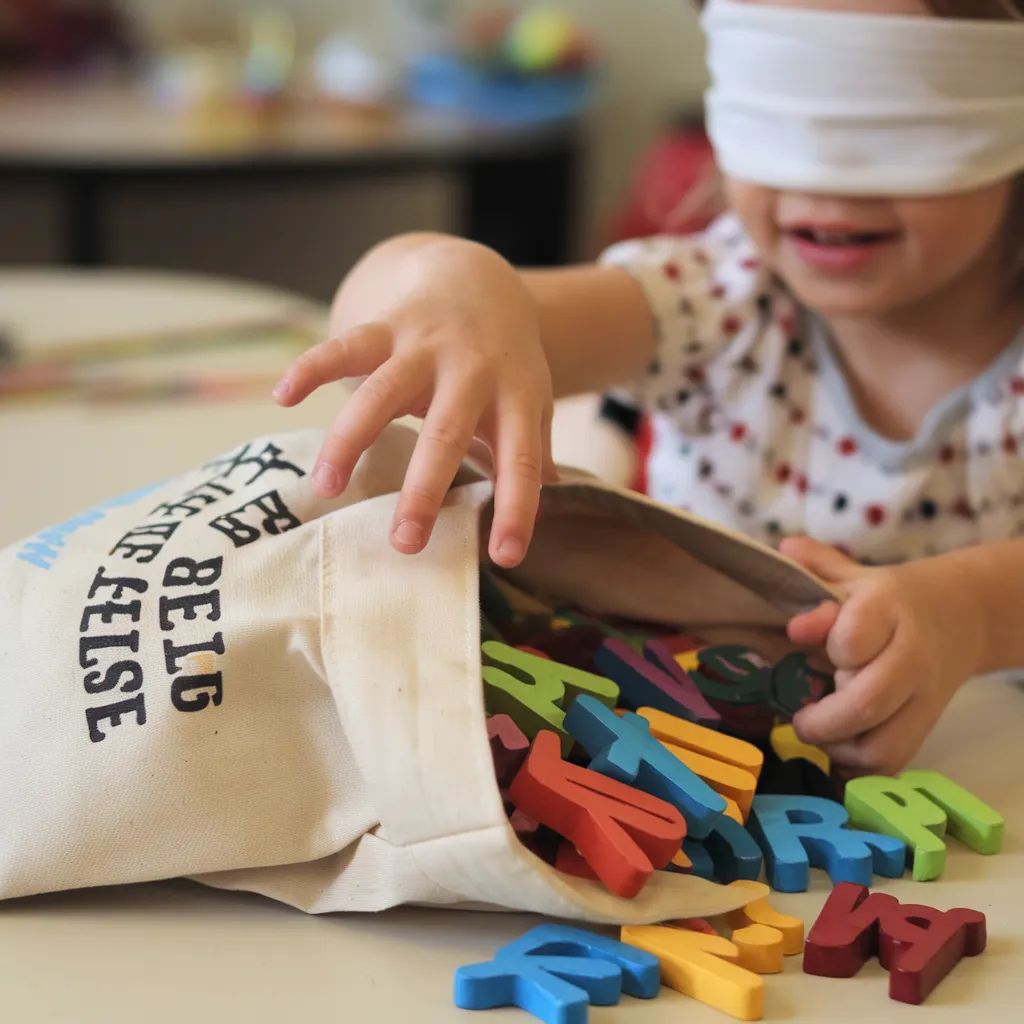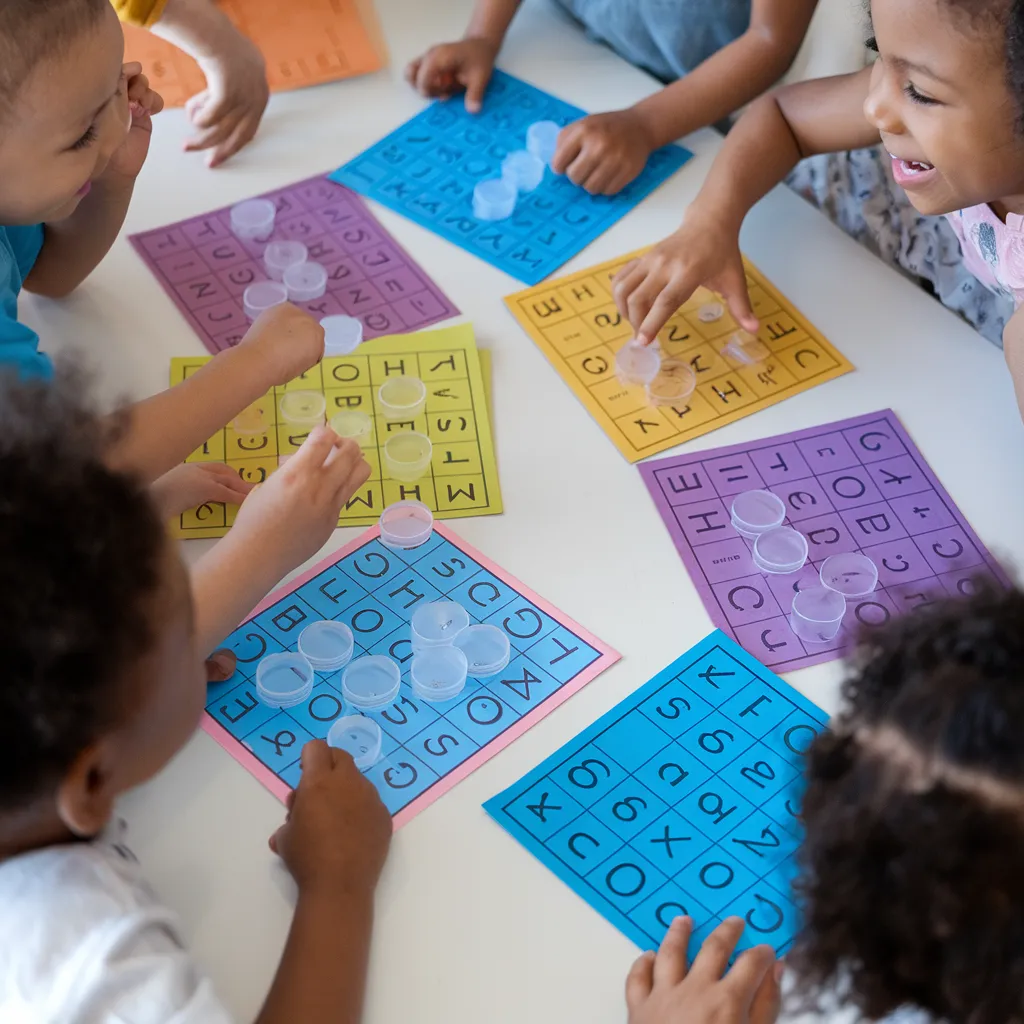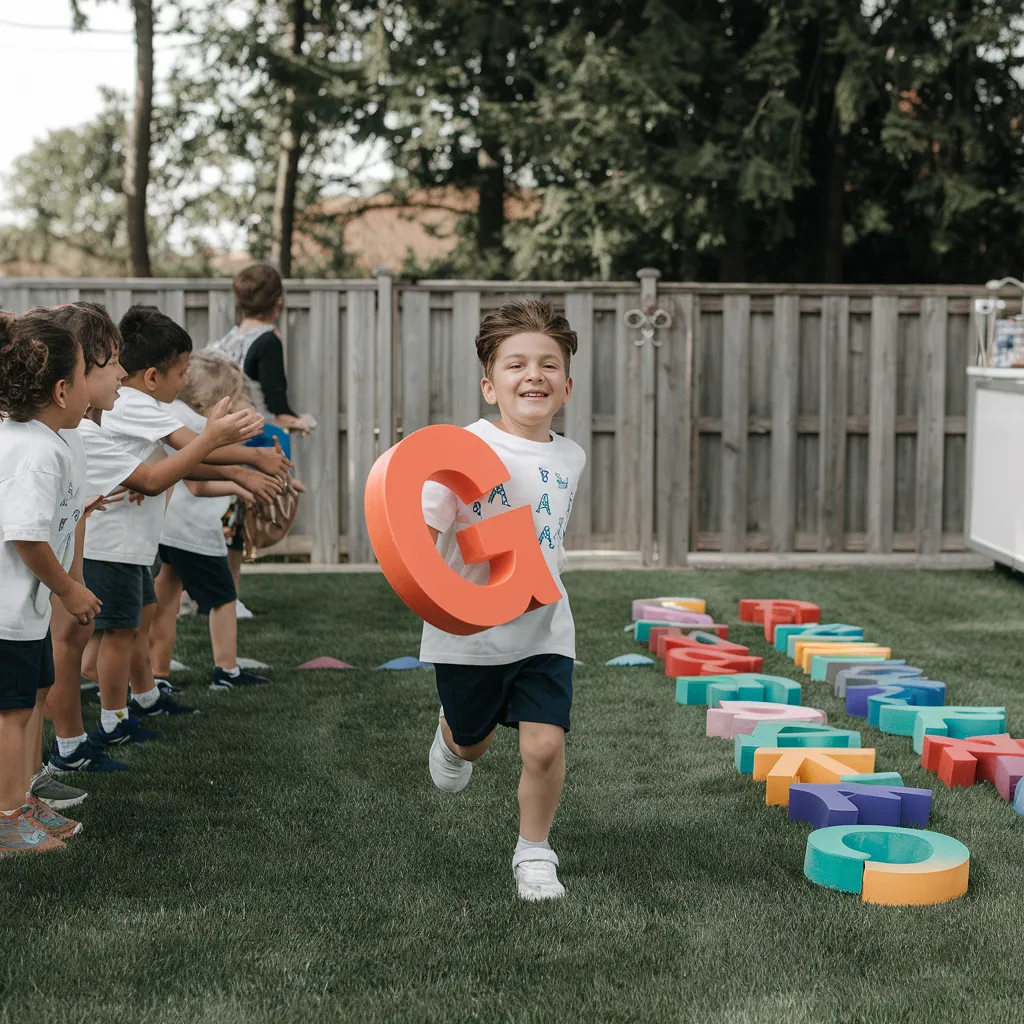Letter recognition forms the cornerstone of early literacy development, setting the stage for reading success long before children decode their first words. Engaging letter recognition games transform what could be tedious practice into joyful learning experiences that captivate young minds. When children interact with letters through play, they naturally develop crucial pre-reading skills without feeling pressured or overwhelmed. Research consistently shows that playful approaches to literacy lead to stronger outcomes than drill-based methods, particularly for children between ages 3-7. Whether you’re a parent supporting learning at home or an educator designing classroom activities, these strategically designed games make letter learning both effective and enjoyable—creating positive associations that nurture a lifelong love of reading.

The Science Behind Effective Letter Recognition Games
Understanding why certain approaches work better than others helps in selecting the most impactful activities for young learners.
How Children Naturally Learn Letters
Children typically develop letter recognition through predictable stages:
- Environmental awareness: Noticing letters in their surroundings
- Personal connection: Recognizing letters in their own name
- Visual discrimination: Distinguishing between similar letter shapes
- Letter naming: Identifying specific letters consistently
- Sound association: Connecting letters with their corresponding sounds
Effective letter recognition games support this developmental progression while keeping children engaged through elements of fun, challenge, and success.
Multisensory Letter Recognition Games for Beginners

Young children learn best when multiple senses are engaged simultaneously. These tactile-focused games create stronger neural connections than visual exposure alone.
Hands-On Tactile Games
- Mystery Letter Bag: Place foam or wooden letters in a fabric bag. Have children reach in without looking, feel a letter, and guess its identity before pulling it out.
- Textured Letter Matching: Create letters from sandpaper, fabric, or corrugated cardboard. Children close their eyes, feel a textured letter, then find its match on a printed alphabet chart.
- Letter Construction Workshop: Provide play dough, pipe cleaners, craft sticks, and wiki sticks for building letter shapes. Challenge children to form specific letters or create their name.
- Sensory Letter Tracing: Fill shallow trays with sand, salt, shaving cream, or rice. Demonstrate letter formation, then let children practice tracing with their fingers.
Movement-Based Recognition Activities
- Alphabet Hopscotch: Create a hopscotch grid using letters instead of numbers. Call out letters for children to hop to, or have them name each letter as they jump.
- Letter Treasure Hunt: Hide letter cards throughout a room or outdoor space. Call out a letter sound and have children search for the matching letter.
- Body Letter Shapes: Challenge children to form letters using their bodies—individually for simple letters like « I » or « T, » or collaboratively for more complex letters.
- Musical Alphabet Chairs: Arrange letter cards on chairs. When music stops, children must name the letter on their chair and an object that starts with that letter.
Interactive Letter Recognition Games for Visual Learners
These activities emphasize the visual aspects of letter recognition while maintaining an engaging, game-like structure.

Digital and Screen-Free Card Games
- Alphabet Memory Match: Create or purchase letter matching cards (uppercase to lowercase, or letter to beginning sound picture). Place cards face down and take turns finding matches.
- Letter Bingo: Design bingo cards with letters instead of numbers. Call out letters or letter sounds for players to mark on their cards.
- Alphabet Go Fish: Play traditional Go Fish with alphabet cards, asking « Do you have letter B? » instead of numbers.
- Letter Dominoes: Use letter dominoes to match uppercase to lowercase letters or letters to pictures beginning with that letter sound.
Technology-Enhanced Letter Recognition
- Interactive Alphabet Apps: Select educational apps specifically designed for letter recognition that provide proper letter formation guidance and multisensory feedback.
- DIY Letter Videos: Record children finding objects around the house that start with target letters, then create a compilation video they can watch and interact with.
- Digital Letter Hunts: Take photos of environmental print containing target letters (signs, logos, books). Create a digital slideshow where children identify the featured letters.
Advanced Letter Recognition Games for Confident Learners

Once basic recognition is established, these games help solidify knowledge while introducing new challenges.
Word-Building Challenges
- Letter Scavenger Hunt: Provide a list of objects to find, each starting with a different letter. When found, children must identify the beginning letter and write it down.
- Alphabet Sorting Stations: Create sorting centers where children categorize objects, pictures, or word cards by their beginning letters.
- Word Family Spinners: Craft simple spinners with beginning consonants that, when spun, create different words from the same word family (cat, bat, rat, etc.).
Collaborative Letter Recognition Games
- Alphabet Relay Races: Divide children into teams. At the signal, the first player runs to a pile of letters, finds a specific letter, and brings it back before the next teammate goes.
- Community Alphabet Book: Assign each child a different letter. Have them find or draw pictures of objects beginning with their letter, then compile into a classroom book.
Customizing Letter Recognition Games for Different Learners
Adapting for Children with Learning Differences
Effective letter recognition games can be modified to support all learners:
- For children with attention challenges: Keep activities brief (5-10 minutes) and incorporate movement
- For visual processing differences: Use high-contrast materials and simplify visual backgrounds
- For children with fine motor difficulties: Provide larger letter manipulatives and adaptive tools
- For multilingual learners: Connect new letter knowledge to familiar concepts in the home language
Conclusion
Incorporating engaging letter recognition games into daily routines transforms the potentially challenging task of learning letters into an adventure children eagerly participate in. The most effective approach combines structure with playfulness, consistency with variety, and challenge with success. By selecting games that align with children’s interests, developmental levels, and learning preferences, you create personalized literacy experiences that build confidence alongside competence. Remember that the journey toward letter mastery should be joyful, not stressful. Start with just a few games that excite your young learners, then gradually expand your repertoire as their skills and confidence grow. With patience, persistence, and plenty of play, you’ll help children develop the strong foundation in letter recognition that supports lifelong literacy success.
25 Exciting Alphabet Activities Preschool Children Will Love
FAQ About Letter Recognition Games
At what age should I start playing letter recognition games with my child?
Most children show readiness for informal letter exposure between ages 2-3, with more structured letter recognition games appropriate around ages 3-5. Watch for signs of interest such as pointing to letters in the environment, asking « what does that say? », or attempting to write letter-like forms. Remember that development varies widely—some children show interest earlier, while others engage more meaningfully later. The most important approach is following your child’s lead, keeping interactions playful, and never forcing participation.
Should I focus on uppercase or lowercase letters first when playing letter recognition games?
Traditional approaches often start with uppercase letters because they’re visually simpler and more distinct from each other. However, many contemporary educators recommend introducing both forms simultaneously since lowercase letters appear far more frequently in the texts children will eventually read. If your child seems overwhelmed by learning both, you might begin with uppercase and gradually introduce lowercase counterparts. Whichever approach you choose, be consistent and explicitly point out the relationships between uppercase and lowercase pairs.
How can I help a child who confuses similar-looking letters like b/d, p/q, or m/w?
Letter reversals and confusions are completely normal during early literacy development, often persisting until age 7. For commonly confused letters, try these strategies:
- Teach these letters with significant time separation (introduce « b » weeks before « d »)
- Use multisensory approaches that incorporate movement and touch
- Create visual or verbal mnemonics (the « bed » trick for b/d, where the circle of b comes first, followed by the circle of d)
- Provide extra practice through targeted games focusing specifically on distinguishing between similar letters
- Avoid expressing concern or frustration over reversals, as this is developmentally appropriate
How frequently should letter recognition games be incorporated into a child’s routine?
Brief but frequent exposure works better than occasional extended sessions. Aim for 10-15 minute game sessions 3-5 times weekly for preschoolers, increasing to 15-20 minute sessions for kindergarteners. Additionally, incorporate casual letter recognition opportunities throughout daily routines—pointing out letters on food packaging, street signs, or favorite books. Consistency matters more than duration; regular, positive interactions with letters build stronger neural pathways than irregular, lengthy sessions.
When should I be concerned about a child’s progress with letter recognition?
While development varies widely, potential red flags include:
- By age 4-5: No interest in letters or print concepts
- By kindergarten entry: Unable to recognize any letters, including those in their own name
- By mid-kindergarten: Recognizing fewer than 10-15 letters despite regular instruction
- By end of kindergarten: Significant difficulty remembering letters despite focused intervention
If you notice these patterns, consider consulting with an early childhood specialist or literacy expert. Early intervention makes a significant difference in supporting children with potential learning differences. Remember that letter recognition is just one aspect of a child’s developmental journey—strengths in other areas often balance these challenges when appropriate support is provided.

Ping : 5 Powerful Ways Alphabet Tracing Printables Revolutionize Early Literacy Success - smartkidsprintable